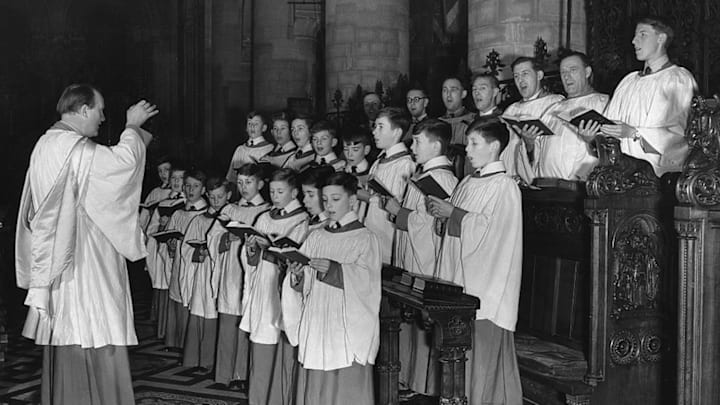“Carol of the Bells” is a classic Christmas carol for a reason: Its simple four-note refrain is easily adaptable across genres and, depending on who’s singing it, it can sound silly, stirring, or even ominous.
But “Carol of the Bells” isn’t an original. The well-known holiday tune was actually adapted from the Ukrainian composition “Shchedryk,” a New Year’s ballad that doubled as a cry for independence in the aftermath of World War I.
“Shchedryk,” which is sometimes known as “The Little Swallow,” was arranged by composer Mykola Leontovych in 1916, but its lyrics existed long before he put pen to paper. The tune belongs to a category of Ukrainian folk songs known as shchedrivka, which honored the sun god. They emphasized bounty, and were usually performed during New Year’s Eve or feasts pegged to the holiday. As Humphrey Kowalsky wrote in his 1925 book Ukrainian Folk Songs: A Historical Treatise, “The forces of nature and heavenly objects are usually personified, and even often referred to as opulent husbandmen or landladies, who give bounteously to all who sing them a paean.” In this case, “Shchedryk” is about a little swallow, who chirps happily about a man’s fertile farm animals and beautiful wife.
Leontovych paired the traditional song with his iconic four-note melody in 1916, and it was performed around Kyiv. But “Shchedryk” soon gained international acclaim due to an unusual set of geopolitical circumstances.
An Independent Ukraine
In 1918, Ukraine declared its independence, hoping the world would recognize its autonomy as borders were redrawn under the peace treaty ending World War I. Symon Petliura, the new president, believed a worldwide tour of Ukraine’s best singers performing the country’s music would help their cause. So a delegation led by conductor Oleksander Koshetz embarked on a years-long tour that took them to Vienna, Prague, and Paris. One of their selections was “Shchedryk,” and it was very well-received—especially once the choir made its way to New York in 1922.

The Ukrainian choir hit Carnegie Hall on October 5, in a concert that received rapturous reviews. “The sudden fortes struck like blows. The swells were like the heave of the deep sea,” The New York Herald wrote. Meanwhile, The New York Times raved, “Admirably trained, the singers responded to the slightest gesture of their leader. The chorus sounded like an instrument played upon by a virtuoso.”
While the group traveled to several American cities, Koshetz and a few of his singers wound up in New York after the tour officially ended in 1924. They continued to perform, and according to the Ukrainian Institute, the American composer Peter Wilhousky wound up at one of their concerts. He was looking for another song to fill out an upcoming NBC radio program, and after hearing “Shchedryk,” he wrote American lyrics that emphasized sweet silver bells over small swallows. In his 1936 copyright, he dubbed it “Carol of the Bells.”
A Century Later
Unfortunately, the Ukrainian musical mission did not succeed. Soviet Russia and Ukraine had been locked in a power struggle since before the choir even left, and the Soviets claimed victory toward the end of 1921—the same year that Leontovych was killed by Afanasy Grishchenko, who was described as a Soviet “agent” in at least one official document. While initial reports speculated that Leontovych’s death was the result of a robbery, Slate suggested that the composer was targeted because of his association with the Ukrainian Autocephalous Orthodox Church.
But the international acclaim of “Carol of the Bells” and its predecessor did bring Ukrainian culture to the world. And now, a century later, it’s being performed once again as the country’s oldest children’s choir tours the globe with a message of freedom and peace. Their name? The Shchedryk ensemble.
